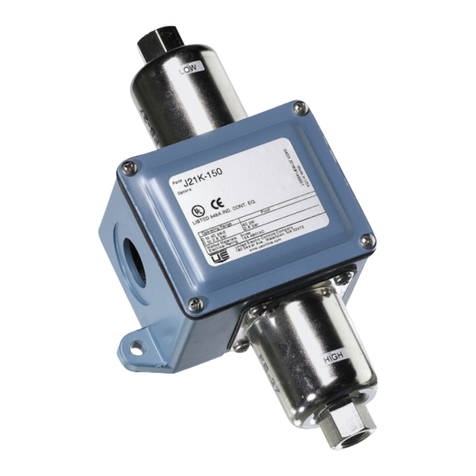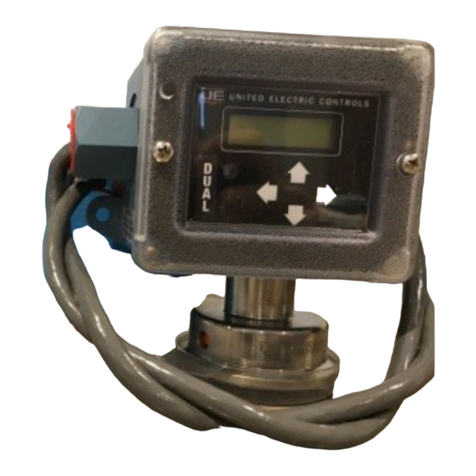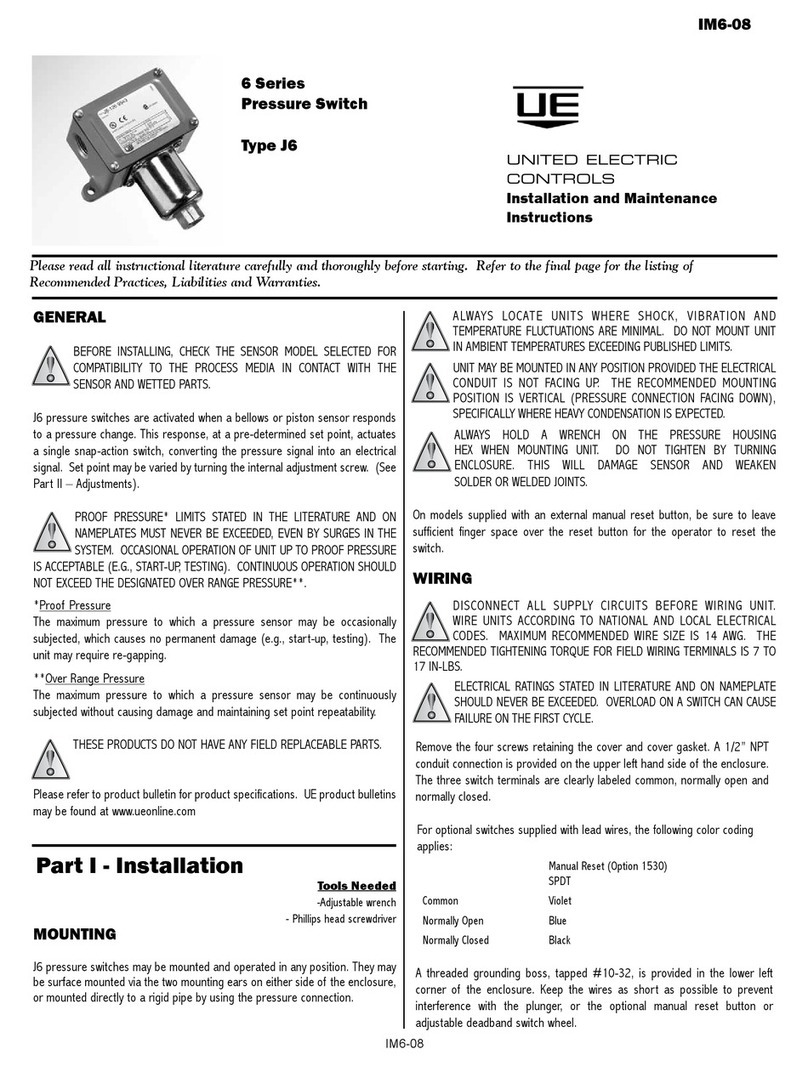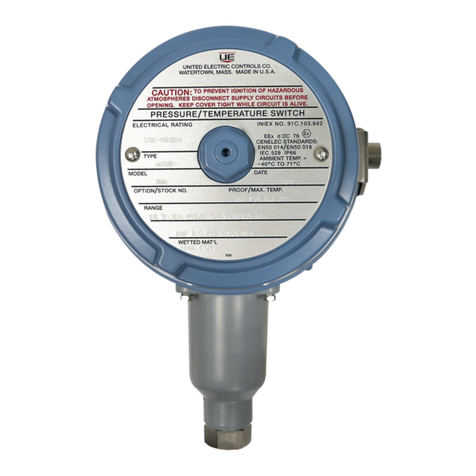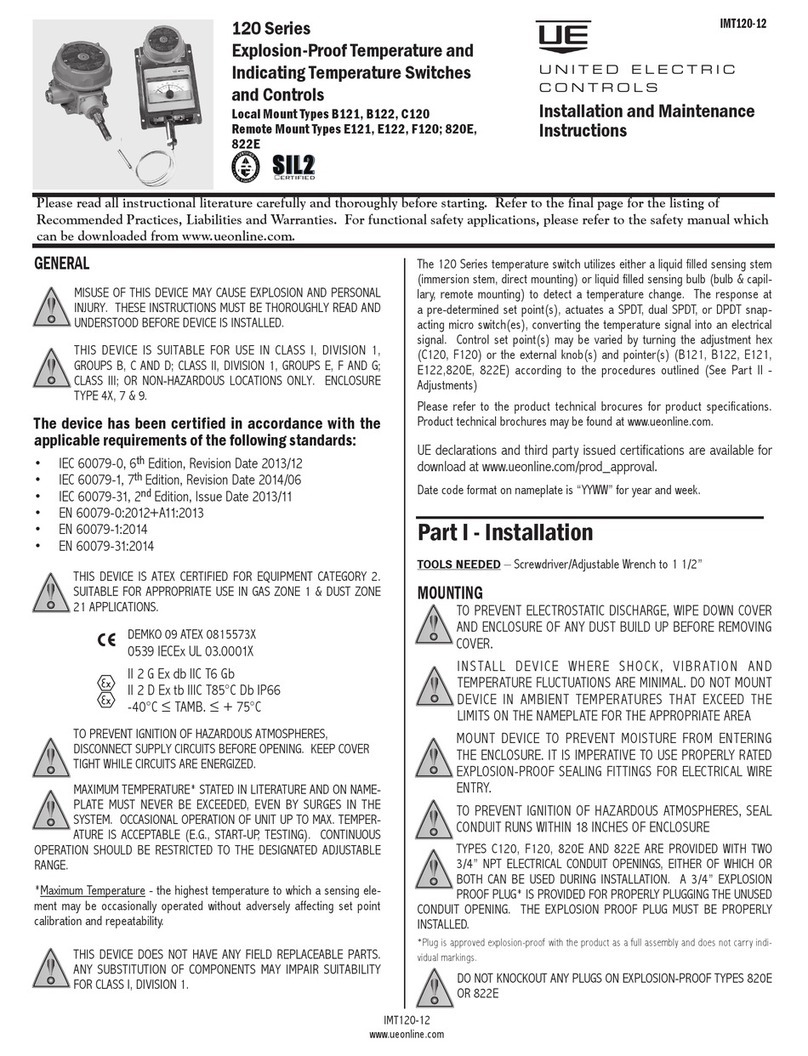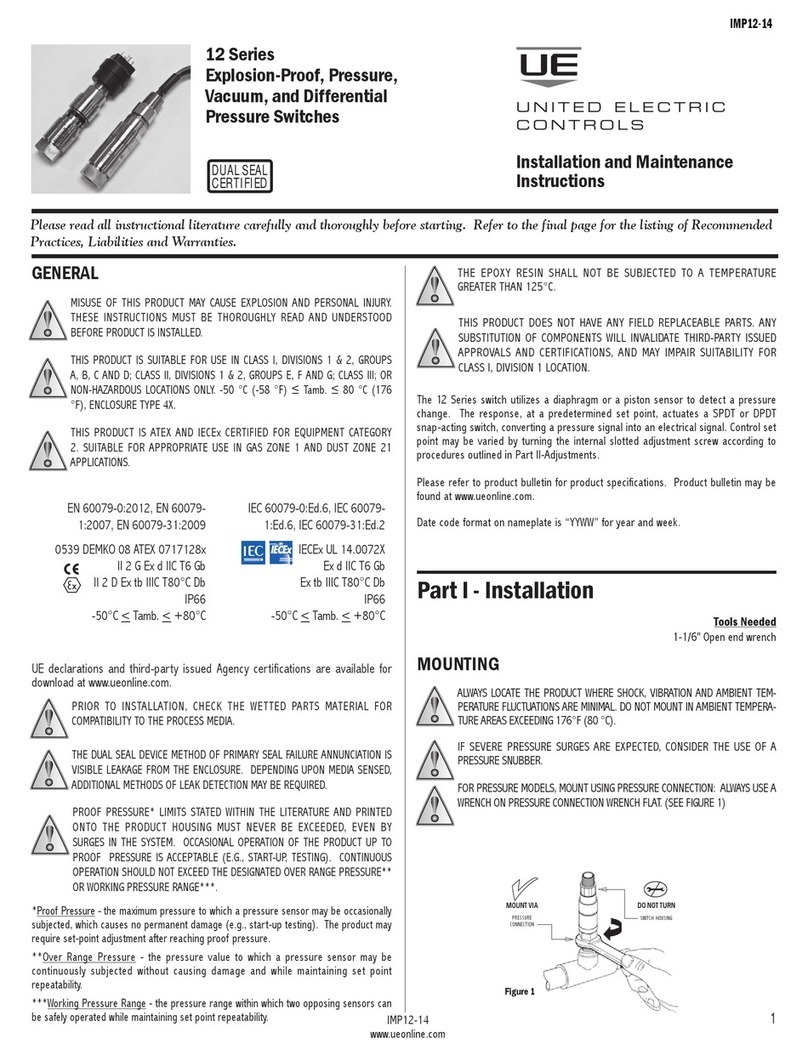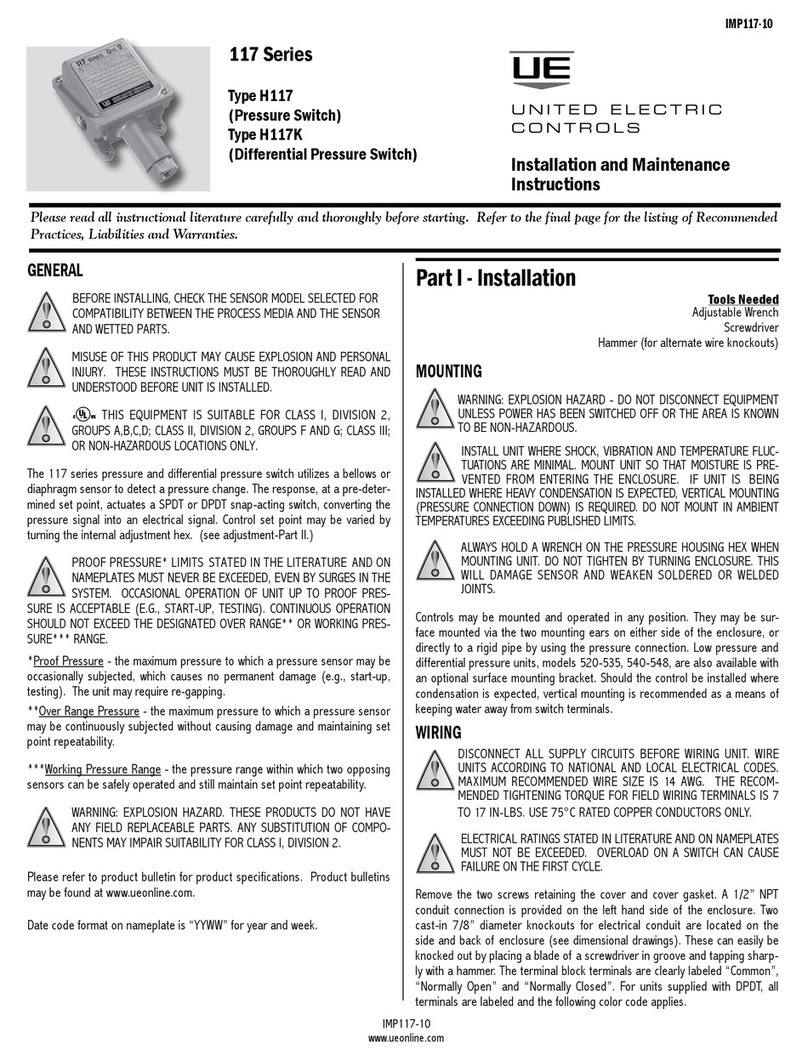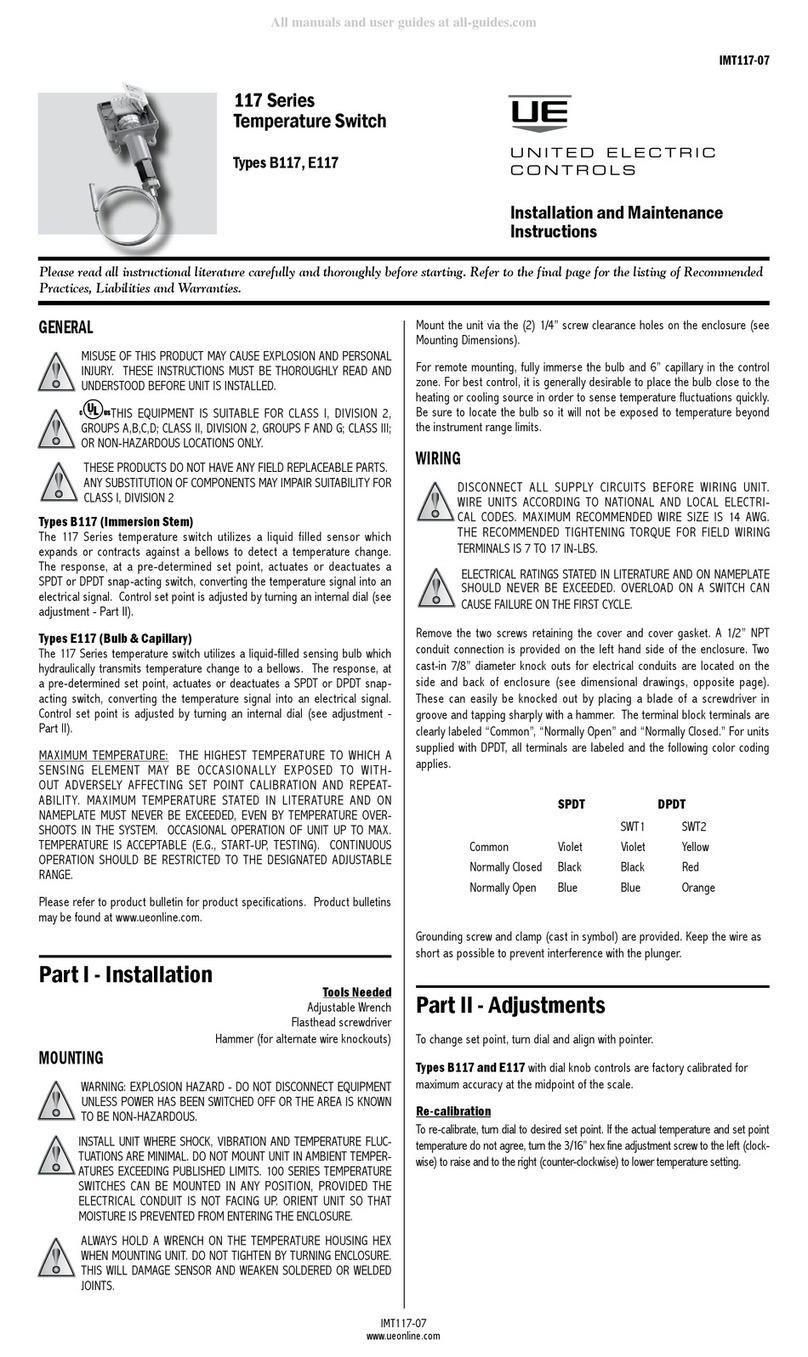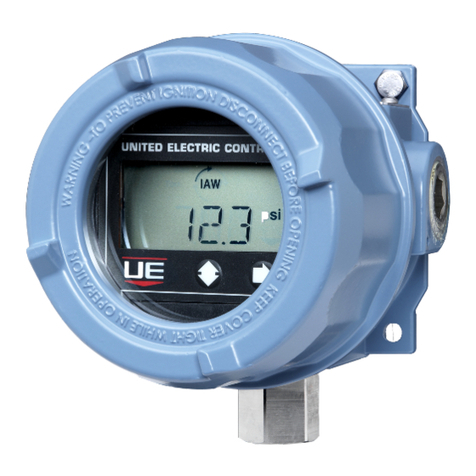
6 IM_ONE-01
www.ueonline.com
I Am Working (IAW®)
The One Series also contains UE’s patented IAW® diagnostic software. On a continuous basis, the One Series is checking itself for proper operation, and letting
you know locally that things are OK using animated arrows on the display. For remote assurance, the output can be set up for 3-state operation, allowing the
host device to detect normal, tripped, and fault conditions (see Key Programming Features, page 7 for a full description of the 3-state operation). IAW® watches
over many possible problems, both within itself and in the overall system (a list of the various parameters is outlined in the chart under Fault Codes, page 10).
In the event of a fault condition, the One Series will attempt to display the problem and provide remote electrical indication. In the case of certain micro-controller
faults, the revolving arrow may freeze or go out, indicating that a failure exists.
OTHER FEATURES
The One Series has other advanced features:
• When the Plugged Port feature is enabled, the One Series will watch for process conditions which could be evidence of a plugged sensing port or
an accidentally-closed instrument valve, and alert the user to potential problems.
• The switch output can be configured for either automatic reset or latching, requiring the user to manually acknowledge the alarm.
• User selectable switch response time (delay) filter allows for dampening the One Series response to process upsets or spikes, eliminating nuisance trips.
(See Key Programming Features, page 7 for a complete description of these features).
DISP AY FEATURES AND DIAGNOSTICS
The One Series features a large, easy to read LCD display. It is used for three main purposes: process indication, programming of key
features and switch status/troubleshooting.
In the Process Display mode, the display may be indicating the following:
• Current process value and units of measure: A value will be displayed as long as the reading is within 110% of the full scale range noted on the nameplate.
The units of measure are factory-set.
• I Am Working (IAW®) status: When the unit and process are working properly a circular 4-segment arrow will be revolving around the letters “IAW” in the
top center of the display. (For a full description of IAW®, see above).
• Offset/Span Adjustment: The word “offset” will appear above the process value, indicating that the offset and/or span calibration has been modified by the
user (see Key Programming Features, for a description of Offset and Span). In addition, the user can easily access information such as the set point, dead
band and minimum/maximum process readings.
• By pushing the right button once, the display will scroll as follows:
SP1 . DB1 . SP2 . DB2 . (8W2D model only)
• By pushing the left button once, the display will scroll the min/max process values seen:
MA . MIN .
The display will revert back to the Process Display mode after scrolling.
A ARM CONDITION
When the process goes beyond the set point, the display will begin to flash, alternating between the process value and “SW1”. The display will continue to flash
until the process has returned to a value beyond the deadband, at which point the display will revert to normal operation and process value display. If the unit
was programmed to have a latching output, a small “Latch” icon will light in the display when the set point is reached, indicating that the output is latched and
needs to be manually reset. (See Key Programming Features, for a complete description).
FAU T CONDITIONS
In the case of a fault condition, the display may indicate the following:
If the IAW® software detects a fault outside of the micro-controller, and can still operate, it will display an error message.
If the fault is one which affects the micro-controller or the display, the revolving arrow around “IAW” will either freeze or go out.
If it is a failure of the power supply or the wiring, the display will go blank.
(See Fault Codes, page 10 for a complete description of fault diagnostics.)
PROGRAMMING
Tools Required
Software Flowchart, page 13
Step 1: Prior to Programming
Programming of the One Series is done using the two buttons on the faceplate (labeled and ). By stepping down through the main menu using the
left button, you can access the various features of the One Series. The right button is then used to move into the feature’s submenu for setting up or
modifying the parameters.
NOTE: See the flowchart on page 13 showing the entire program menu structure.
Important Note: The One Series programming menu is a single direction loop, with submenus embedded in it. Because the main menu is single direction, there
is no way to reverse direction and back up in the program. If you need to make a correction to a prior Main Menu step, you will need to continue forward and exit,
then re-enter the program and step through to the appropriate feature. If you are in a Submenu, you will need to circle back to the beginning of the Submenu
and re-enter the Submenu.
The One Series has a number of advanced features you will need to understand before you can effectively use them. These features are discussed on next page.












